You’ve been in business for some time now, with a strong local presence and you’ve noticed that your reliable landline-based phone system no longer meets all of your needs. You’ve witnessed the trends, with many business owners selling their products in virtual stores, rather than traditional bricks and mortar set-up.
So, after some careful consideration, you’re definitely interested in expanding your business. You’ve considered all your options and want to upgrade from your legacy phone system, probably still utilizing the antiquated Public Switched Telephone Network (PSTN) with analog connections. You’re now convinced that a new VoIP IP-PBX with all the bells and whistles, like web meeting, call-flow management, multiple IVR and CRM integration, for example, can take your business to the next level. You’re right!
Key Takeaways
- Switching from landline to VoIP boosts flexibility, reduces costs, and unlocks advanced features like voicemail-to-email, virtual receptionists, and CRM integration.
- The transition involves assessing internet quality, selecting a VoIP provider, configuring new or existing hardware, and optionally porting your existing phone number to retain local presence.
- For best results, prioritize dedicated bandwidth, business-grade SIP trunking with built-in security, and avoid sacrificing call quality or reliability for lower pricing.
Why Switch from a Landline to VoIP?
Traditional phone lines rely on analog technology that has remained mostly unchanged for decades. While they offer stability, they come with higher costs, limited features, and less flexibility than modern VoIP solutions.
Key Benefits of VoIP Over Landline
| Feature | Landline | VoIP |
| Call Quality | Consistent, but affected by aging infrastructure | High-quality, but dependent on internet speed |
| Monthly Cost | Typically higher due to line rental fees | More affordable with various pricing plans |
| Features | Basic calling with voicemail | Call forwarding, video conferencing, virtual numbers, and more |
| Portability | Fixed to a specific location | Can be used anywhere with an internet connection |
| Scalability | Limited, requires extra wiring for multiple lines | Easily expandable with cloud-based solutions |
Switching to VoIP ensures cost savings, greater feature accessibility, and flexibility for both home and business users.
Step-by-Step Guide to Switching from a Landline to VoIP
The transition process requires planning, the right equipment, and selecting a VoIP provider that meets your needs. Below are the key steps involved.
Where do you start?
People know you and a good bit of your business is referral or word of mouth, so changing your phone number should be the last thing you do if you want to maintain your local presence. However, using a VoIP PBX will change the way your phone system operates. Instead of your phone lines connecting at the wall jack like landlines, your new phone “lines” will be virtual and connected using your existing internet connection, or a second, dedicated internet connection. Virtual phone lines or trunks delivered over IP using the SIP protocol, Sip Trunking, will be essential to your new phone system. In addition, a local number is important for business growth and continuity in the community.
So, what should you do? Short answer: get a new service, but keep your local number. A fancy new SIP Service and VoIP Provider will open up a whole new world for the future of your business and keeping your local DID number (Direct Inward Dial) will make sure you are still reachable to your local community. Although you are eager to take advantage of the much wider audience, you don’t want to sacrifice your local presence by changing your phone number altogether.
Step 1: Assess Your Internet Connection
VoIP relies entirely on internet connectivity, making it crucial to check your broadband speed before making the switch.
- A stable connection with at least 5 Mbps upload speed is recommended for high-quality calls.
- Fiber, cable, or DSL connections work best for VoIP services.
- If using multiple VoIP lines, consider upgrading your bandwidth to support additional traffic.
To test your internet speed, use tools like Speedtest.net or consult your internet service provider for recommendations.
Step 2: Choose the Right VoIP Provider
Selecting a VoIP service provider depends on your needs, budget, and desired features. There are several categories of VoIP providers:
| Type of VoIP Service | Best For | Key Features |
| Residential VoIP | Home users replacing landlines | Caller ID, voicemail, call forwarding |
| Business VoIP | Companies needing multi-line communication | Auto-attendant, conference calling, CRM integration |
| Hosted PBX | Large organizations needing advanced systems | Cloud-based management, scalability |
| Mobile VoIP | Remote workers and travelers | App-based calling, global accessibility |
Consider whether porting your existing number is important, as not all providers offer number portability.
Step 3: Select the Necessary VoIP Equipment
Switching from a landline to VoIP requires compatible hardware. The options vary based on whether you use analog phones or digital devices.
| Equipment Type | Use Case | Requirement |
| Analog Telephone Adapter (ATA) | Using traditional phones with VoIP | Connects standard landline phones to VoIP networks |
| VoIP Phones | Businesses or frequent VoIP users | Plug-and-play phones with built-in VoIP capabilities |
| Softphones (VoIP Apps) | Mobile or remote workers | Software-based calling via smartphones, tablets, or PCs |
For seamless VoIP performance, ensure routers and modems support Quality of Service (QoS) settings, which prioritize VoIP traffic for better call quality.
Step 4: Port Your Existing Phone Number (If Needed)
If you want to keep your current landline number, number porting allows you to transfer it to a VoIP service.
Porting Process:
- Check with your VoIP provider to confirm number portability.
- Request a porting authorization by providing your landline account details.
- Wait for transfer completion, which may take a few days.
- Test your number to ensure it functions correctly after the switch.
If porting is not an option, you can still obtain a new VoIP number from your provider.
Step 5: Set Up and Configure Your VoIP System
Once your VoIP service is activated, follow these steps:
- Install the VoIP hardware or software according to your provider’s instructions.
- Configure VoIP settings, such as call forwarding, voicemail, and security options.
- Test the system by making calls to check audio quality and network stability.
For business users, integrating VoIP with CRM software or virtual assistants can enhance communication efficiency.
Common Challenges and Solutions When Switching to VoIP
While VoIP technology offers numerous advantages, some users may face initial technical challenges. Here’s how to address them:
| Issue | Solution |
| Poor call quality | Upgrade internet speed, enable QoS settings on your router |
| Dropped calls | Check network stability, use wired connections instead of Wi-Fi |
| Compatibility issues | Use an ATA for analog phones or upgrade to VoIP-compatible devices |
| Power outages affecting VoIP | Have a backup power supply or use mobile VoIP apps as an alternative |
Understanding these potential issues can help ensure a smooth transition from landline to VoIP.
Tips When Transitioning To VoIP
Change service without giving up your number
When shopping for your new phone system, in addition to selecting a VoIP PBX solution, phones, web meeting, CRM and selecting a SIP Trunking Service Provider, make sure you clearly communicate your desire to maintain your existing phone number. Why? So you don’t effectively trade away your local customers for online customers. The idea is to maintain and grow both! Keeping your local DID number is not only the thing to do, but it’s also easy, even if you have analog numbers you don’t want to give up.
By using a simple and inexpensive analog gateway, your IP-PBX can “talk” to your analog lines using your SIP Trunks. Keeping your existing DID phone number associated with your landline allows you to move your physical office anywhere, in or outside the city limits, without anyone questioning your local presence For example, if you have outgrown your office/warehouse space, you can move with little or no impact on your business. Thus, using the same local DID telephone number allows you to expand your operations while maintaining business continuity. Existing customers can continue to connect with you as usual, and new customers can take advantage of the new easy access to you as if you were in their own backyard.
Making customers across the globe feel as if they are right next door. After all, when you’ve taken the time to establish your business in a local community, connected with other business owners, partners and long term clients or customers, the last thing you want to do is give it up because your phone system hasn’t kept up with the times.
Advantages of SIP Trunking
One of the many benefits of using Sip Trunks is flexibility. Due to competitive Sip Trunk service packages and rates, there are many SIP Trunk Providers to choose from. Some SIP Trunk packages even include unlimited calling and significant savings on international call charges, as well. It’s easy to add new DID’s, such as a toll-free number, so that it’s a local call for anyone who wants to connect or do business with you, regardless of their country of origin or regional location.
In addition to toll-free number services, which can be used to design a new call routing solution within the PBX, so that incoming calls can be automatically routed to various departments, such as customer service or technical support, you can also add a new or additional DID number (Direct Inward Dialing). Perhaps you’ve always wanted to add dedicated department call lines, such as a dedicated sales line – with local DID’s it’s a simple thing to do at a very reasonable cost when using SIP Trunks.
SIP Trunking also allows you to leverage a wide range of VoIP PBX solutions on the market so you can choose the one that best fits your current demand and price range, starting large, or small with room to grow. Rather than a one-to-one relationship, trunks can easily be scaled to match your business requirements. Using legacy phone systems, you were often required to choose 15 or 30 additional lines if you wanted to increase capacity, even when you only needed 2 or 3. This often resulted in costly charges for services you might not even be using.
With SIP Trunks, you can easily choose the exact amount and type of DID numbers, with additional services on-demand, such as toll-free number lookup or service to multiple sites plus remote office locations.
It’s a good time to upgrade your internet connection
Once you’re new your new SIP Trunk provider has been selected, take advantage of a new dedicated internet connection for the SIP Trunk(s). Most commercially-available firewalls are able to handle several WAN (Wide Area Network) connections, and considering the low cost of an Internet connection in many locations, a dedicated VoIP connection will be the most reliable way to ensure the quality of your VoIP calls.
While using a VoIP PBX with Sip Trunks doesn’t overly tax a properly voice-optimized internet connection, it’s best to maximize voice quality by evaluating what your current connection is versus what it could be and the positive impact excellent voice quality has on your business. Some SIP Trunk providers are now offering dual services with incredibly affordable packages so that it’s also possible to buy your Sip Trunks and voice-dedicated internet connection bundled together.
While much will depend on the cost and your network infrastructure, dedicated voice traffic separate from your data traffic helps to ensure conducting business behind the scenes, such as streaming services or free WiFi for your customer waiting area or web-based video meetings, for instance, doesn’t impact your everyday call quality or communication with your customers.
Don’t skimp on quality
No one can blame you for looking for competitive rates, but choosing services based on cost alone is not a good idea. Start with a bonafide commercial-grade, business-quality SIP Trunk service. Some SIP Trunk providers will offer bundled services with cheaper connection quality. Steer clear of this.
Be cost conscious, but think of the internet connection as any other service you’re offering your customers. This service makes it so that they can do business with you when they choose. If you don’t currently skimp on product quality, don’t start now. While you should expect to pay a little more for business class service, most providers publish their rates so it’s easy to compare Sip Trunk providers’ rates and services for the best possible deal without sacrificing service quality.
Let’s talk about security
Along with a (hopefully) dedicated internet connection, when installing your new VoIP PBX it’s a good time to make sure the firewall you’re using is up-to-date and able to handle VoIP traffic. The fact is, SIP Trunks require internet exposure, so it’s extremely important that your new SIP Trunking service has a secure network in place. The system should offer you access for self-monitoring not only for security but also to make changes as needed. If you don’t have in-house staff, the service should at least include automated alerts to help protect your business against call fraud. Fraud can cost you big-time if you don’t shop smart for Sip Trunks with a priority on services, quality, and security, in addition to rates.
VoIP Features That Enhance Communication
Modern VoIP providers offer a wide range of features that go beyond basic calling. Some of the most useful include:
- Call forwarding and routing – Direct calls to any device, ensuring you never miss important communications.
- Voicemail-to-email transcription – Converts voicemail messages into text and sends them to your inbox.
- Conference calling – Enables multi-user voice or video calls for better collaboration.
- Auto-attendant (Virtual Receptionist) – Automatically directs calls to the correct department or individual.
- Integration with business tools – Connects with CRM systems, help desks, and other productivity applications.
These advanced VoIP capabilities provide more functionality than standard landlines.
Is Switching to VoIP the Right Choice?
For most users, VoIP provides significant cost savings, enhanced mobility, and superior call management features compared to landlines. However, before making the switch, consider:
- Do you have a reliable internet connection?
- Is number porting available if needed?
- Does your VoIP provider offer the features you require?
- Will VoIP work for both home and business communication needs?
Final Thoughts
Making the transition from a landline to VoIP is a straightforward process that offers numerous advantages. By selecting the right provider, ensuring a strong internet connection, and configuring the necessary equipment, users can enjoy a seamless, feature-rich calling experience at a lower cost.
Whether upgrading a home phone system or adopting VoIP for business, following these steps will help you navigate the transition smoothly. With VoIP services evolving rapidly, now is the ideal time to make the switch and take advantage of modern communication technology.
Further Reading










